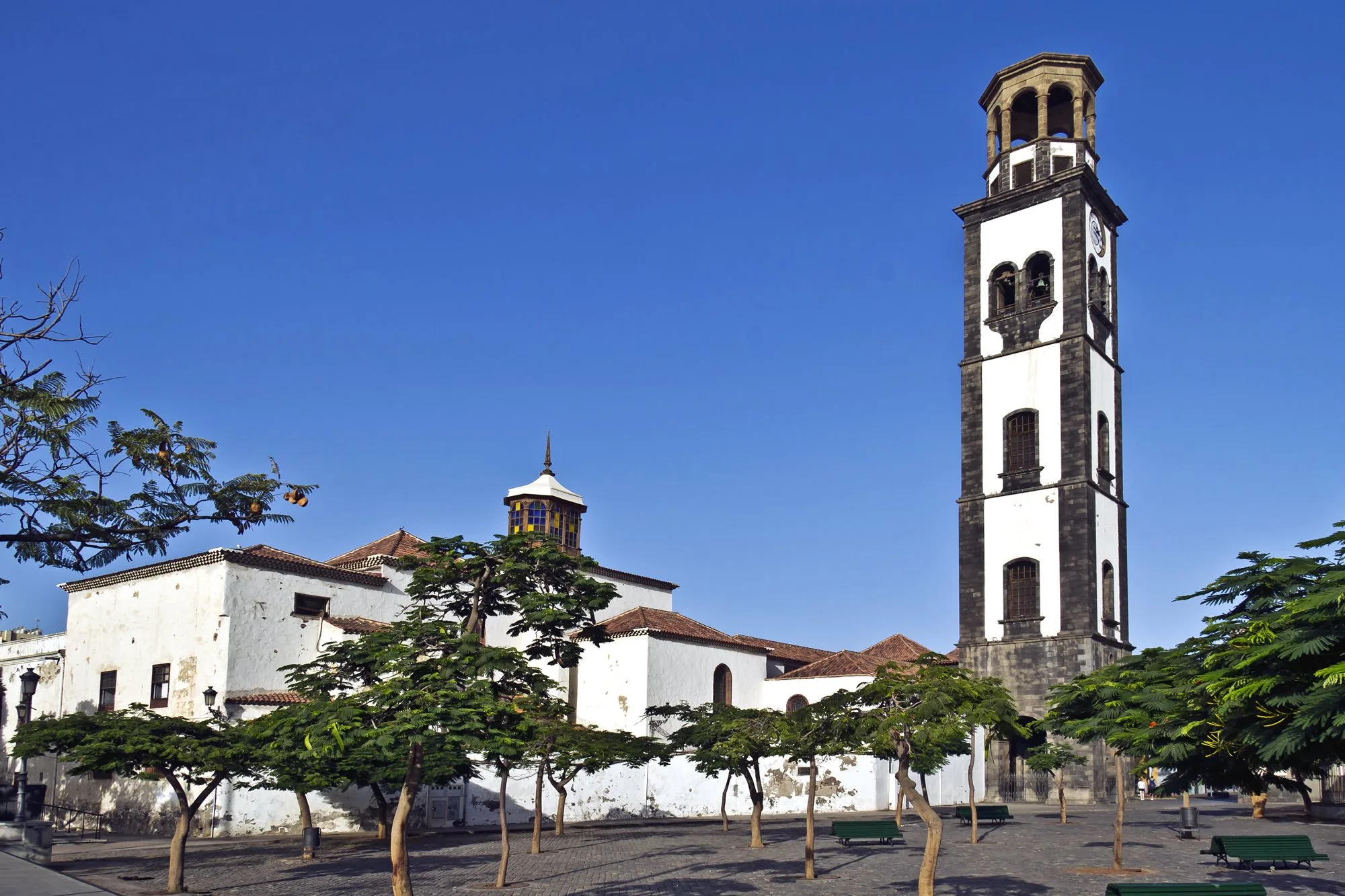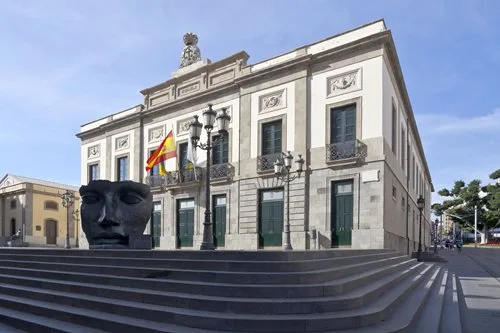
Cookie settings
We use our own and third-party cookies in order to offer our services, display videos, obtain statistics and offer personalized advertising.
For more information, please read our cookies policy.

In the year 1500, Juan Guerra, the church founder, began building this church dedicated to the "Santa Cruz" (Holy Cross).
In 1638 the church was given the name of Nuestra Señora de la Concepción but it was destroyed by a fire in 1653. The tower that one can see now was built in 1786.
The current building dates from the 17th and 18th centuries and consists of five naves in the shape of a Latin cross. The church was built with a Tuscan architectural structure but in a Canarian colonial style.
This church contains an important artistic patrimony.
Its oldest works are the small, gothic statue of the Virgen de Consolación, (the conquistador Fernández de Lugo built a chapel to this Virgin in 1496) and the Cruz de la Conquista, which Fernandez de Lugo brought ashore on landing on the island in 1494.
The church also has a series of marble pillars produced in Genova. The pulpit is notable for its carving by Rodríguez de la Oliva, an artist from Tenerife. As for gold and silver works, the silver throne that carries the statue of the Santo Entierro (Holy Burial) in Easter stands out as one of the best in the Canary Islands. In the sacristy (vestry) the Corpus throne is well preserved: Damián de Castro from Cordoba, who has several other pieces in the church, carried out this work.
The brothers Logman, who were priests at the church, donated several valuable works such as the beautiful monstrance (the vessel used by the Roman Catholic Church to display the Eucharist, during Adoration) called "de los Logman". However, for many, the masterpiece of this church is the Chapel of the Carta, in the sacristy entrance. Capitan Matías Rodríguez Carta, commissioned the building of this chapel in the 18th century and dedicated it to San Matías.
Its altarpiece is richly decorated in a baroque style. The main altar is presided over by a statue of the Inmaculada Concepción, an excellent statue by the artist Fernando Estévez from La Orotava, and the altarpiece itself is one of the most elegant examples of baroque art in Tenerife. This church also contains one of the best pieces of religious art on the island, the Cristo del Buen Viaje from the 16th century, together with other valuable pieces from the Canarian statue-makers Miguel Arroyo, Luján Pérez, Rodríguez de la Oliva, González de Ocampo and Fernando Estévez. In terms of pictorial works, the church houses two interesting canvases by Juan de Miranda, as well as other anonymous works. The church also has an important musical archive and an organ built in London in 1862.
Built: XVI-XVIII Centuries
Author: Anónimo
Style: Baroque, Neoclassical
Category: Religious
Type: Church
Address and telephone
If you see any mistakes or want to add anything to this information, please contact us.
To display this map, you have to accept analytical and advertising cookies. Cookie settings.




Book your hotel